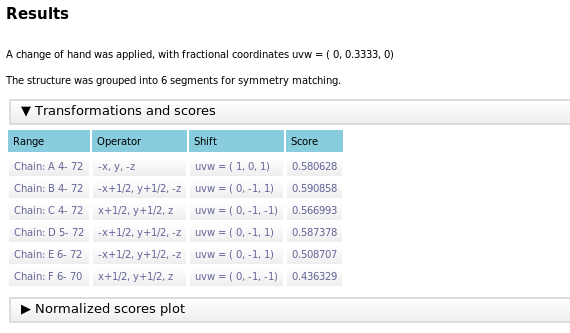The model matching task is a tool to enable the simple comparison of atomic models. It uses the crystal symmetry to move chains, ligands and waters of an atomic model, in order to place them in the same part of the unit cell as an existing model. It can optionally be used to change the origin on which the model is defined, for example for comparing different molecular replacement results.
Input

Two atomic models must be selected. The first atomic model (1) is the model to be moved. This model will be broken up into connected fragments, and each fragment will be moved using the crystal symmetry to best overlap the second model. A distance criterion is used to determine what constitutes a connected fragment - by varying this criterion the behaviour of the program can be adjusted.
The second atomic model (2) is the model to be matched. This model is fixed, and is not moved or altered in any way.
Two options may be specified (3): an optional change of origin and/or hand may be applied to best match the models. A change of hand is meaningless for most biological structures, but is useful when comparing heavy atom substructures which are typically subject to hand ambiguity. Note that the origin shift is not restricted obey symmetry constraints. The connectivity criterion may also be specified: the model is normally moved a chain at a time, however if monomers within the same chain are separated by more than the connectivity distance they are moved separately. This allows chains to remain intact while moving solvent molecules and ligands individually.

The report describes any origin or hand shift which has been applied to the model, and the number of connected fragments into which the model was divided for matching. Check for a change of hand - a hand change is meaningless for anything other than a heavy atom substructure, and usually indicates a problem in matching the molecules. Also check whether any change of origin is consistent with the spacegroup symmetry.
The model fragments and associated symmetry transformations are also reported.